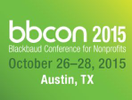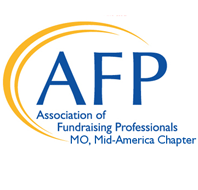Marc A. Pitman's Blog, page 30
October 29, 2015
2 morning tasks to super charge your nonprofit social media strategies #bbcon

At Blackbaud's Conference for the Philanthropic Community in Austin this week, I got to hear Austin Graff share tips from his experiences with IJM (International Justice Mission) and Honest Tea.
He said two things that are super simple and super powerful for making sure your social media really connects with people.
How to know what exactly to post about
One of the "secrets" to effective social media is joining conversations instead of inflicting your message on others.
Austin said that each morning, he'd come into work at IJM and check Twitter's home page to see what was trending. Facebook shows trends too. (I'd add going to Google Trends as well.)
Trends are what the most people are talking about. He'd then see if any had a natural, authentic connection to the work of IJM. If they did, he'd incorporate those in the messages.
How to make a big impact on Twitter
Austin also said since social media is about connecting humans with humans, each morning he'd review all IJM's new Twitter followers. In looking at the bios, he'd look for keywords to help him know who in IJM should connect. He'd also favorite tweets with IJM or IJM hashtags just so people knew that IJM was noticing.
For more of Austin's thinking, check out his blog: https://austinkgraff.wordpress.com/
The post 2 morning tasks to super charge your nonprofit social media strategies #bbcon appeared first on FundraisingCoach.com.






October 28, 2015
4 Questions to Answer for Monthly Giving #bbcon

I'm attending the last day of BBCON - Blackbaud's Conference for the Philanthropic Community and just got to here an amazing 15-minute session by Brady Josephson.
He outlined the four questions you need to answer when setting up your monthly giving program. Here they are, with a short explanation.
The 4 Questions to Answer for Monthly Giving Program
Why should they do it?
Tell stories
How much does it cost?
Reduces stress to know amounts
What do they get?
Not stuff, but story
How can you delight?
Insider things, not perks - just to surprise
For more, click on the image and you'll see the tips he puts under each point. And he wrote a great blog post 3 Key Questions Good Monthly Giving Programs Answer.
The post 4 Questions to Answer for Monthly Giving #bbcon appeared first on FundraisingCoach.com.






October 20, 2015
Fundraising problems are LEADERSHIP problems
Image courtesy of Peter Wood
A couple weeks ago, I shared a story with nonprofit executive directors who get my Fundraising Kick coaching emails. It's important enough that I want to share it with you too.In September, I was privileged to keynote for the Utah Nonprofits Association. My talk was for a mixed audience of nonprofit leaders but I knew I was going to be talking about fundraising too. So I said:
I know I’m going to mention ‘fundraising’ a lot in this talk. And I know that many of you are board chairs, CEOs or executive directors, or marketing people. But don’t mentally check out of this talk simply because you think ‘fundraising isn’t my responsibility.’ In my 20 years of experience in this sector, I’ve found that nearly all fundraising problems in nonprofits are problems with leadership.
Nature abhors a vacuum
I knew this from experience. I once was the leader of fundraising at a large organization with an interim president. I couldn't figure out why I felt like we were laboring so hard to make asks. Then I realized: I was the only one casting vision.
This freaked me out. I wasn't even the CEO of this organization, yet I was creating vision for it? What if my vision were wrong? What if it weren't where this organization with a budget of tens of millions of dollars was supposed to be going?
That's when the truth of "nature abhors a vacuum" struck me. There was a vision vacuum. So I was doing what I could to fill it, especially because I knew that vision is what motivates giving. And we had a great story to tell. Looking back, I realize that the interim-president wanted to let the next president start with a clean slate. That may be great from an operations stand point, but it can be a near death knell for fundraising.
Problems with fundraising are problems with LEADERSHIP
Here's how it works:
If a board isn’t casting vision, the nonprofit staff is going to have a harder time raising money.
And if the board hasn’t been told that it’s no longer the 1950’s when boards could be “clubs,” they aren’t going to realize they need to help fundraising. They’ll think they subcontracted that to the CEO they hired.
And if the CEO hasn’t been in nonprofits, or hasn’t been involved with fundraising, she won’t know what to do. She’ll likely wonder why the board isn’t fundraising, or even donating.
And she’ll think she’s taken it off her plate by hiring a fundraising person.
The truth is fundraising can’t be subcontracted. Fundraising isn’t a cruise ship that people can sit in lounge chairs or play shuffle board. It’s a fishing vessel; it's hard work that requires all hands on deck. Fundraising works when there is strong leadership with vision cast by the board and CEO. And goals that cascade from that vision through the various levels of the organization.
One way to get out of the vacuum
I then shared an exercise for Fundraising Kickers to do as they made their 5-10 major gift calls that week:
Pay attention to who you resent. Who do you blame for “making” you have to do this?
Write their name on a paper. Preferably one that only you will see!
Ask yourself, “What don’t they know?” Write that beside their name.
In my experience, most leadership problems around fundraising are rooted in ignorance. People simply don’t know what they don’t know. So what does each person need to know? Is it how to tell a powerful or effective story? Is it how to not meddle in staff affairs? Or is it learning how the fundraising profession really works? That it isn’t all bake sales and crowdfunding?
As you identify the root issues, you’ll be able to act on really fixing the leadership problem.
And whatever level you are at in the organization, there is some level of leadership and education you can exercise.
If you want to get these leadership coaching emails, sign up at http://fundraisingcoach.com/fundraisingkick/
The post Fundraising problems are LEADERSHIP problems appeared first on FundraisingCoach.com.






October 19, 2015
The right use of "we" in fundraising
 This morning, I read a great post by Terry St. Marie called "The Critical First Step For Great Leadership: The Journey From 'I' to 'We'." His movement from ego-centricity to inclusiveness is something as critical in fundraising as it is in leadership.
This morning, I read a great post by Terry St. Marie called "The Critical First Step For Great Leadership: The Journey From 'I' to 'We'." His movement from ego-centricity to inclusiveness is something as critical in fundraising as it is in leadership.
Normally "we" is a bad word in fundraising letters. I regularly help my executive coaching clients edit it out of their fundraising letters. Usually, my first step is to count all the uses of "we," "our," and "ours" versus the number of "you," "your," and "yours." This moves their fundraising letters away from "we are awesome and doing amazing things so you should donate to us" to "you are making an amazing impact in the world."
And those letters are exponentially more effective.
A coaching client transformed thatBut a few months ago, I noticed a Fundraising Coach client's use of "we" had shifted in her fundraising letters. Her use of "we" was inclusive. It included the donor. "Together, we are doing amazing things."
It worked. It was powerful. Rather than excluding the donor like a typical "we" does, this type of "we" included the donor, recognizing the donor as part of the family.
That is good fundraising.
You still need to change your fundraising lettersI still recommend you try to do a "we-ectomy" on your letters. You can see the process in this post on telling a powerful fundraising story. Doing this will make you better at thinking in terms of the donor's role in making your mission possible.
As you get better at this, you will then be able to grow into the appropriate use of "we."
Remember, if your nonprofit is dependent on donor's giving to fund your mission, donors really are part of your family.
The post The right use of "we" in fundraising appeared first on FundraisingCoach.com.






The right use of “we” in fundraising
 This morning, I read a great post by Terry St. Marie called "The Critical First Step For Great Leadership: The Journey From 'I' to 'We'." His movement from ego-centricity to inclusiveness is something as critical in fundraising as it is in leadership.
This morning, I read a great post by Terry St. Marie called "The Critical First Step For Great Leadership: The Journey From 'I' to 'We'." His movement from ego-centricity to inclusiveness is something as critical in fundraising as it is in leadership.
Normally "we" is a bad word in fundraising letters. I regularly help my executive coaching clients edit it out of their fundraising letters. Usually, my first step is to count all the uses of "we," "our," and "ours" versus the number of "you," "your," and "yours." This moves their fundraising letters away from "we are awesome and doing amazing things so you should donate to us" to "you are making an amazing impact in the world."
And those letters are exponentially more effective.
A coaching client transformed that
But a few months ago, I noticed a Fundraising Coach client's use of "we" had shifted in her fundraising letters. Her use of "we" was inclusive. It included the donor. "Together, we are doing amazing things."
It worked. It was powerful. Rather than excluding the donor like a typical "we" does, this type of "we" included the donor, recognizing the donor as part of the family.
That is good fundraising.
You still need to change your fundraising letters
I still recommend you try to do a "we-ectomy" on your letters. You can see the process in this post on telling a powerful fundraising story. Doing this will make you better at thinking in terms of the donor's role in making your mission possible.
As you get better at this, you will then be able to grow into the appropriate use of "we."
Remember, if your nonprofit is dependent on donor's giving to fund your mission, donors really are part of your family.
For another look at the right use of "we," look at this post by Tom Ahern that quotes Lisa Sargent, Pamela Grow, and Nancy Schwartz: http://conta.cc/1WMeaBf
The post The right use of “we” in fundraising appeared first on FundraisingCoach.com.






October 16, 2015
Declare today – Follow Up Friday!
This morning, I was inspired by reading "The Ball is Always in Your Court" on the ForImpact.org blog. So I'm declaring today Follow Up Friday.
In the post, Tom Suddes says that of the three parts of any ask, the follow up is the most important. I agree. In fact, I start the follow up at the ask. I teach coaching clients to ask questions like, "May I follow up with you in a week if we haven't heard back?"
It's integrity, not nagging
Too often, following up feels like nagging. We tell ourselves we must be bugging the person.
But if we've started the follow up in the ask, calling back is simply being a person of integrity. You are simply doing what you promised to do. You're a person of your word.
Make today "Follow Up Friday!"
So make today your "follow up Friday." Whether or not you started the follow up at the ask, make today the day you follow up with the donor. Use the phone, write a note, send an email. Today isn't about beating yourself up over details of technique. Today simply about working in the most important stage of your ask: the follow up.
The post Declare today – Follow Up Friday! appeared first on FundraisingCoach.com.






September 29, 2015
Is your fundraising letter as effective as this bag of coffee?
I like reading obscure things: prefaces to books, notes on receipts, credits after movies. So it's no surprise that I read the marketing message on the new bag of East African coffee my wife bought for us to try.
What I read on this coffee bag blew me away
 Seriously. You can see it for yourself off to the side here.
Seriously. You can see it for yourself off to the side here.
The first line seemed boring corporate speak:
Our team at Westrock Coffee strongly believes it is critical to take an active role to improve the quality of life in the African communities where we buy...
But it quickly added something about me:
...where we buy your coffee.
Not "our" coffee but "my" coffee.
They had my attention. And they kept it for the rest of the panel!
By purchasing this bag of Westrock Coffee you are making a substantial and sustainable difference in communities throughout East Africa.
Specifically, with each purchase, you are helping fund clean water projects for coffee producers, their families, and neighbors who otherwise would not have accessible clean water, improve access to affordable dairy and protein for women and families that otherwise would not have proper nutrition, and instructional, hands-on training for coffee producers about agronomy, health education, and other life-changing programs.
Each bag of coffee makes a difference, and together we are investing in the lives of real people to make a lasting change in the quality of their future. Thank you for joining our team.
Is your fundraising letter as good?
Here are some things that stand out:
Only the first and last line mention the company
And even those mention the coffee company in inviting way. The first line says they're buying my coffee. (Not that I, the customer, am buying their coffee!) And the last lets me know my purchase got me onto a team. I had no idea there was a team to join! I was often the last picked in grade school, but here I got the feeling they'd been waiting for me.
They expect me to buy again
Do you see the beginning of the second paragraph? "...with each purchase..."! I was just trying this coffee out. But now...how can I not continue helping all these families?
The message is all about the impact I am having
Did you see that? Yes, the second paragraph is one impossibly long sentence. But what a sentence! I learn that:
I am helping fund clean water projects for everyone
I am helping women and children eat better
I providing training in agriculture and health!
They even give me a QR code to actually watch "how your support is directly making a significant and long-lasting difference for the people in these communities"!
I thought we were just buying an inexpensive alternative to Peets or Starbucks. But now I see that I'm changing lives in a long-term systemic way. And I keep doing that each time I buy a bag of their reasonably priced coffee.
Wow.
Are you making your donors say "wow"?
Are you writing your fundraising letters this persuasively? Do donors say "wow" after reading your letter or your nonprofit's thank you? Are you expecting donors to only make one gift a year or to keep on making gifts throughout the year? Are you welcoming them to the team?
There's still time to tweak some of your year end fundraising letters, emails, and your nonprofit's web copy.
Grab a cup of coffee and get to it!
The post Is your fundraising letter as effective as this bag of coffee? appeared first on FundraisingCoach.com.






September 28, 2015
A surprising way to increase planned gifts
Used with permission of ken_mayer on Flickr
I love that we live in a time of actual research of fundraising. We're finally moving beyond anecdotes to verified research by groups like the Centre for Sustainable Philanthropy. (In the interest of full disclosure: I am on the Advisory Panel for the think tank associated with the Centre.)The newest findings presented this month by the Centre for Sustainable Fundraising show a surprising way to increased planned gifts: tell people what others have not done!
Those of us familiar with Robert Cialdini's studies in influence know that most times "social proof" helps people make a decision. When they see others like them taking action, they feel more confident to taking the same action.
Not so with planned giving
Oddly, the research indicates more people respond to planned giving requests when they're told that others are not giving them!
In the announcement of the findings, the Centre reports doing a split test between two messages:
1/3 of our most loyal supporters haven’t made a will. Many of them are taking advantage of the Will Aid scheme
2/3 of our most loyal supporters have made a will. Many of them took advantage of the Will Aid scheme.
24% of those who received the first message responded versus only 16% of those who received the second.
Researchers also reported that a second experiment showed people responded better to a message saying that, in recent years the organization had seen a drop in bequests.
The Bystander Affect
They say this is likely due to the "bystander effect." When people see lots of activity, they think someone else will do it. But when they see no one responding to an obvious need, they'll jump in to help.
I wouldn't recommend trying this with all of your fundraising. (And definitely not using messages that aren't true.) But if your current approach to planned giving isn't yielding the results you'd hoped for, why not test this messaging?
Read all about the research and the implications at:
http://blogs.plymouth.ac.uk/criticalfundraising/2015/09/14/news-telling-people-what-others-havent-done-is-more-effective-at-encouraging-them-to-consider-a-charitable-bequest/
The post A surprising way to increase planned gifts appeared first on FundraisingCoach.com.






September 21, 2015
[Guest Post] The Most Important Story Fundraisers Can Tell – and it’s probably not one you’ve thought about
Today, I'm honored to introduce you to Vanessa Chase. Vanessa is a storytelling training powerhouse. Fundraising Coach blog readers may remember her from last year's Stewardship Tutoring Hour. I regularly share Vanessa's tips and blogs in my coaching with clients and I'll get to share the stage with her again in Seattle at Nonprofit Storytelling Conference. Vanessa will be giving a training for The Nonprofit Academy called "The Story of You – How to create and share your personal story to raise money," so I asked her to share a bit of her story here. You'll learn the surprising power of your own story and three powerful questions to help you tell it.
You can read more about Vanessa and her approach to storytelling at her blog www.TheStorytellingNonprofit.com/blog/. And you can find her on Twitter @vanessachase
The Most Important Story Fundraisers Can Tell (and it’s probably not one you’ve thought about)
There is immense value in telling stories to donor audiences. Stories can show your organization’s work in action. They can tangibly connect donors to what they make possible. Stories can communicate shared values and beliefs that drive giving.
Ultimately, tell a story is an act of making (or deepening) a connection. Philanthropy is also all about connections and relationships, so it is easy to see how stories have found a thriving home in fundraising offices.
But for all the stories that non-profits are telling these days, there is one very important story that most fundraisers are not telling. That’s their personal story.
In the spectrum of stories that we can tell to donors, one that we don’t often share is our personal story. Instead, we (the fundraisers) remove ourselves from the equation and become the messenger for our organization’s stories. Sure – this is an effective technique. But at the end of the day, you are a person and it is important that you personally have a connection with the donor. It’s not just about your organization’s connection to the donor.
So – how can you add in this personal element to your donor relations? Start sharing your personal story.
In my own experience as a fundraiser, I can tell you with absolute certainty, your personal story matters. You have stories and perspectives that are worthy of being shared.
A number of years ago, I worked at Union Gospel Mission in Vancouver. For the first few months that I worked as a Development Officer there, I worried that I didn’t have the right to talk about our clients and their experiences. Our clients lived in extreme poverty, suffered with intense addictions, and some where homeless. I had never personally experienced any of these things, and so I felt inauthentic talking about people who had when I was on donor meetings.
But one day, I was walking through the neighborhood on the way back to my office and I had a woman on the street stop me. She was very underweight and looked like she hadn’t slept in a while. As I cross the street, she asked if I had any money to spare. I told her no, I didn’t. But as I turned to walk towards my office, she grabbed my arm and she said, "Please, I will do anything for money."
As she said those words, I felt my heart break in pieces. For me, this was the moment when I realized why I was fundraising for Union Gospel Mission. I was raising money to help give that woman (and others like her) a better life.
From that moment onward, I felt like I had a personal story to share with donors about why Union Gospel Mission’s mission mattered to me. It was one I shared often with donors and it helped donor understand me as a fundraiser a little better.
Putting together your personal story is a self-reflective process. Here are 3 questions to consider as you think through personal story to share with donors.
Question 1 – What made you want to work for the organization?
Question 2 – What values and beliefs do you have that align with your organization’s work?
Question 3 – Has there been a particular moment in your work that made you believe in the mission even more strongly?
In the comments below, share your answer to one of these questions. Marc and I would love to hear your story!
Please do share your thoughts in the comments. And be sure to join us as Vanessa takes us into a deep dive in this process in October's webinar for The Nonprofit Academy.
The post [Guest Post] The Most Important Story Fundraisers Can Tell – and it’s probably not one you’ve thought about appeared first on FundraisingCoach.com.






September 4, 2015
Upcoming Nonprofit Leadership Talks & Training
Are you in Orlando, Salt Lake City, Austin, Seattle, or Kansas City? I'll be coming to each and would love to get together.
Most of my work is private, with individuals and nonprofits. But I also love giving leadership and fundraising trainings at conferences. Here are some events I'll be presenting at:
 WALT DISNEY WORLD: 9/11-16 NCDC Annual Conference (September 12-15)
WALT DISNEY WORLD: 9/11-16 NCDC Annual Conference (September 12-15)I'll be doing two sessions: a seminar on "The Crisis in Nonprofit Leadership" and facilitating a discussion with leaders.
There may still be time to register: http://NCDCconference.org/
 SALT LAKE CITY: Utah Nonprofit Association Annual Conference (September 24)
SALT LAKE CITY: Utah Nonprofit Association Annual Conference (September 24)I'm honored to be keynoting UNA's 25th anniversary conference on "Fearless Futures: Breaking Barriers for Success." I'll be delivering the keynote and doing breakout sessions on leading through storytelling and on "Ask Without Fear!"
You can register for the conference at: https://utahnonprofits.org/events/annual-conference
 ONLINE: Blackbaud K12 Coaching Hour (September 30)
ONLINE: Blackbaud K12 Coaching Hour (September 30)Blackbaud is hosting a special hour of coaching with me for its K-12 school clients. Ask your own questions and I'll give insights based on what's really working now!
If you're a Blackbaud K12 client, you've been sent a survey asking you for your top questions!
 AUSTIN: BBCON (October 25-27)
AUSTIN: BBCON (October 25-27) I'll be coming to Austin to participate in a "Big Idea" featured speakers line up discussing the power of story.
Learn more and sign up at: http://bbconference.com/
 SEATTLE: Nonprofit Storytelling Conference (November 12-13)
SEATTLE: Nonprofit Storytelling Conference (November 12-13)I am so excited for our second annual Nonprofit Storytelling Conference! This conference transformed the way fundraisers, marketers, executive directors, and board members talked about their nonprofit. And we've seen alumni double and triple their fundraising! I'll be MC'ing the entire conference again and weaving storytelling nuggets between an amazing speaker lineup.
Join us (or learn more) at: http://bit.ly/NPStoryConf
 KANSAS CITY: AFP MO, Mid-America Chapter February Focus (February 18)
KANSAS CITY: AFP MO, Mid-America Chapter February Focus (February 18)I'm looking forward to doing a full day teaching on Ask Without Fear!® We'll cover what to say, when to say it, how to overcome objections. Even how to get the first meeting. And I'll show you how this impacts all your fundraising: written, grants, corporate sponsorships, as well as major giving!
Be on the look out for registration information at: http://midamerica.afpnet.org/
Want leadership or fundraising training in your area?
I love doing these trainings. If you'd like me to speak to your team around these conferences, or if you'd like me to come to you, let me know by filling out this form: https://qc125.infusionsoft.com/app/form/training
The post Upcoming Nonprofit Leadership Talks & Training appeared first on FundraisingCoach.com.













